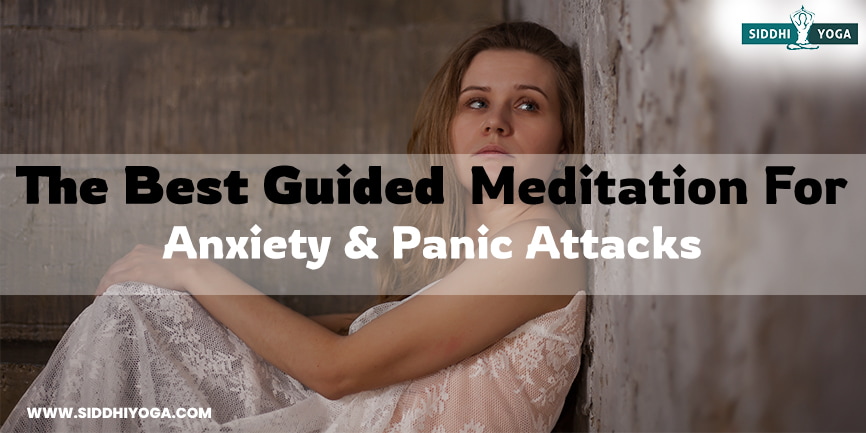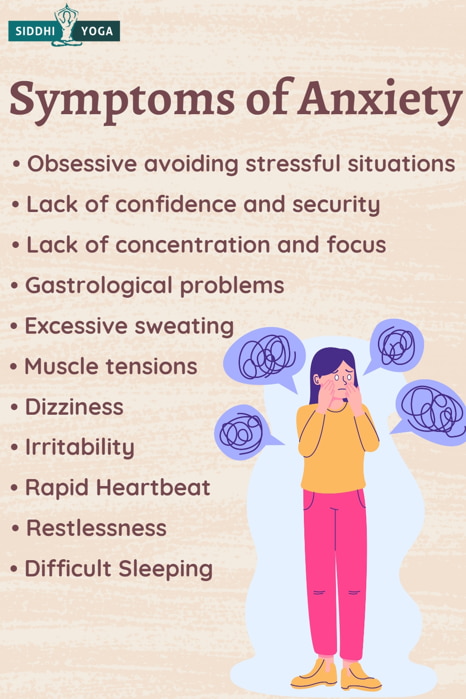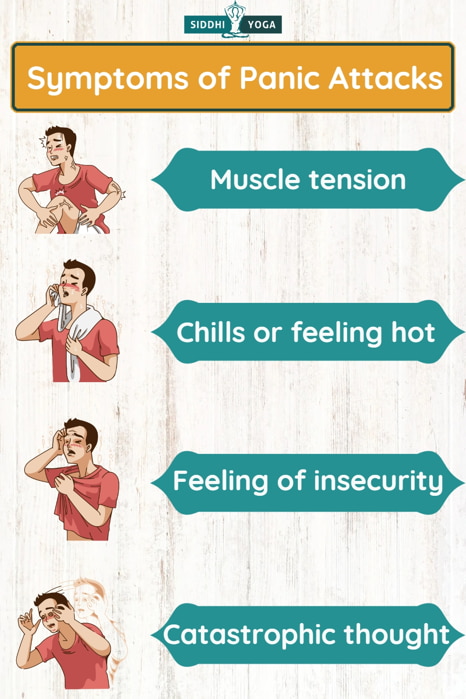
Learn how to do guided meditation for anxiety and panic attacks. In this article, you will know everything you need to overcome your anxiety & panic.
Introduction
Anxiety, panic attacks and depression are signs of mental, emotional and physical imbalance in the body and mind. There are many reasons why our modern society is struggling more and more with such conditions. The Constant rush, lack of sleep, past traumatic experiences, hormonal imbalances, worrying about the future and emotional struggles are just a few factors that could lead to anxiety or even panic attacks and depressive episodes.
We should accept that changes must be made in our daily lives to get back on track with our health and well-being. Fortunately, there are many ways to deal with anxiety, and meditation is very effective for people dealing with such mental, physical and emotional symptoms.
Below we will go through some of the symptoms and causes of anxiety and introduce you to guided meditation to help you counter your anxiety and panic attacks.
Anxiety and Panic Attacks Today
At some point in our lives, we will all be experiencing anxiety. Often it will demonstrate itself emotionally and physically as a result of chronic or sudden stress, unprocessed emotions, dealing with trauma and so on.
Anxiety
Anxiety disorder can be categorized into different groups, such as generalized anxiety disorder, anxiety in social situations or phobia anxiety disorder. It is also possible to suffer from various types of anxiety; in this case, medical treatment may be necessary. It is important to remember that there is no shame in dealing with anxiety and that reaching out for help, any help that is available and accessible for us at the moment is a valid and meaningful step in one’s search for calmness and inner peace.
Symptoms of Anxiety

Some symptoms of anxiety could include:
- Feeling nervous
- Sensing danger and feeling panic in ordinary situations
- Increased heart rate
- Shaking of the hands and legs
- Experiencing exhaustion and sleep difficulties
- Lack of concentration and focus
- Gastrological problems
- Muscle tensions
- Excessive sweating
- Obsessive avoiding stressful situations
- Lack of confidence and security
Panic Attacks
Panic attacks are a more sudden and intensive form of anxiety and stress burst. They are known to cause a sensation of unrealistic fear and physical changes such as the very fast beating of the heart, trembling of the body, lack of breath and muscle tension.
Panic attacks usually appear out of the blue or with a very short notice of feeling physical changes throughout the body, as mentioned before. It may last from a few minutes to a few hours, causing huge exhaustion and distress to our mental, emotional and physical well-being and balance.
Symptoms of Panic Attacks

Some symptoms of panic attacks could include:
- Breathing difficulties
- Increased heart rate
- Nausea
- Pain in the chest and throat area
- Chills or feeling hot
- Muscle tension
- A sense of losing control
- Feeling of insecurity
- Catastrophic thoughts
Mindfulness and Meditation Against Anxiety
Worrying, a sense of stress and negative thoughts are what people with anxiety often go through daily. Mindfulness and meditation are beneficial in calming, relaxing and broadening our perspective in stressful situations when done with a self-loving and caring attitude.
Relaxation techniques can be taught and learned by all of us and are available to us whenever we need. It might not be easy to reach out to them when dealing with anxiety and stress. Nevertheless, staying focused and open towards healing and change is important. Whatever we can do during an anxious or stressful day to calm us, even if just a little bit, is valuable and important. Achieving calmness and inner peace should never be a race or a competition – so don’t compare your journey to others and try approaching mindfulness and meditation with a kind heart.
You will find techniques in mindfulness and anxiety-guided meditation focusing on conscious breathing practices, body scan relaxations, guided visualizations for anxiety and stress and positive and comforting affirmations. All of these practices concentrate on letting go of the physical tensions in our body during stress and anxiety, as well as aiming to calm our thoughts and reconnect to the present moment.
Guided Meditation For Anxiety
Guided meditation for anxiety and panic has supported emotional, mental and physical healing. It is often used as therapeutic practice during mindset shifting and brain rewiring. Mindfulness meditation is a known relaxation and grounding technique that aims to connect us again with our inner self, center and core. By focusing on the here and now, our mind may let go of intrusive and catastrophic thoughts and muscle tension caused by them and will more likely achieve a state of relaxation and security.
During a guided mindful meditation for anxiety and panic, we will most likely be invited to notice the emotions and thoughts which arise within us. The approach towards them should be calm and accepting as if we were noticing what our body and mind are trying to tell us without connecting to it from our perspective. Becoming an observer and sending kind and compassionate energy towards the areas which cause tension in our body and mind is key during a guided meditation for anxiety and stress.
Accepting and welcoming our thoughts and not reacting to them is a basic mindfulness and guided meditation technique for anxiety or panic. With this in mind, you may now try to find a guided meditation for anxiety script or audio recording online, and take your time to find ease and relaxation during a stressful day.
Sample Scripts for Anxiety
One of the biggest benefits of guided meditation is that each practice is prepared with a specific area of focus in mind. A guided meditation script will be structured to help you deal with a specific topic, issue, body tension or anxious thought.
Below are some recommendations for guided meditations for anxiety and panic.
Guided Meditation For Anxiety And Sleep
Guided Meditation for Stress and Anxiety Relief
Guided Meditation for Panic Attack
Guided Meditation Social Anxiety
Guided Meditation Anxiety Attack
Guided Meditation For Fear
Guided Meditation For Ocd
Guided Meditation For Negative Thoughts
10-Minute Guided Meditation Anxiety
Creating An Anxiety Meditation Routine
Becoming aware of anxiety and how it can impact our daily life, relationships, workspace and sleep is important for anyone struggling with chronic stress, anxiety or panic attacks. By creating a routine of self–care and clearing the mind, we can help our entire self become more aware of the present, our body to feel more relaxed and calm, and our emotions learn how to respond to stressful situations.
Here we will share some tips on how to create an anxiety meditation routine:
Start Small
Finding just five minutes a day can be challenging following a guided meditation routine. Remember that consistency in whatever you do will eventually bring you results, so for a start, find just three to five minutes three times a week to begin your meditation practice.
Find The Best Moment For You To Meditate
Everyone is different and will feel comfortable relaxing and meditating in different day moments. To start, you can set a schedule for yourself to begin every morning with a short guided meditation for anxiety. To follow up, a bedtime meditation routine will also help you regulate your sleep pattern and lead to a more relaxed and deeper rest.
If you are struggling with anxiety during the day or after work, it might also be a good idea to try a short guided meditation for anxiety during your afternoon break.
Remember that there is no right or wrong when beginning your journey with meditation and taking a step towards welcoming calmness and tranquility into your life. Feel free to explore and experiment.
Create A Comfortable Space To Meditate
Making sure you have a quiet and safe space to meditate is a very important factor, especially at the beginning of trying relaxation practices. If you try meditation at home, let the people who live with you know that you wish to have time and space for yourself without being disturbed.
Starting as comfortably as possible when looking for a meditation pose is important. Lying down is also an option, or you can find an easy seat on a chair on the floor with additional cushioning.
The Bottomline
Anxiety, stress, and panic are all signs from our body and mind that we need to slow down our pace and calm down. Our nervous system, constantly bombarded with new input and stressors, will eventually feel overwhelmed and send a clear message to us to stop. Guided meditation has been very helpful in calming and creating more security within, especially during moments of higher stress. If you wish to learn more about meditation and healing practices, we invite you to join our online meditation course at siddhiyoga.com